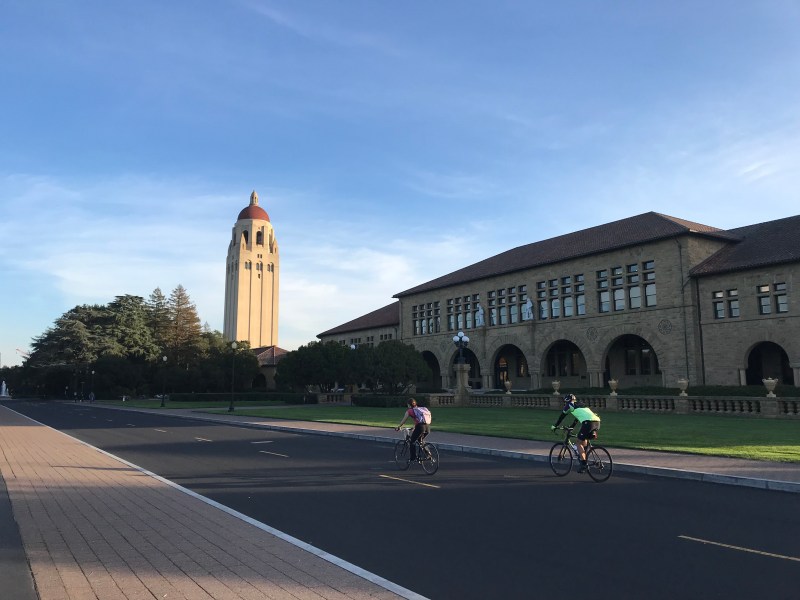Stanford will delay the resumption of some in-person undergraduate classes, adopting a phased approach, after nearly 400 students have tested positive for COVID-19 since last Friday. Nearly 300 faculty, staff and postdocs have also tested positive over the last week.
Most undergraduate courses will now resume in-person instruction on Monday, Jan. 24 at the beginning of week 4 — one week later than the University initially planned. All graduate-level courses will resume in-person instruction as scheduled on Tuesday, Jan. 18. Undergraduate courses that must be taught in-person — such as labs, design projects, art practice and performance-based classes — will also resume on Jan. 18.
Students who have not yet returned to campus are encouraged to consider the new updates and decide the optimal time to return to campus, University Provost Persis Drell and Associate Vice Provost for Environmental Health and Safety Russell Furr wrote in an email to the community on Friday.
Stanford is also changing protocols for students required to isolate after testing positive.
Designated isolation spaces on campus, which are preferred, have reached capacity, according to Furr. The University is still sending students to off-campus isolation locations, but if those also reach capacity, some undergraduate students who test positive for COVID-19 may be asked to isolate in place, even if they do not have a private living space or bathroom. In this case, the University would provide roommates who have tested negative with additional living options. These options include an empty room or common space that has been repurposed as a temporary sleeping space, a friend’s room or an off campus hotel. Stanford would also designate shared bathrooms for COVID-positive and COVID-negative students to avoid overlap and exposure.
The University has yet to update its isolation protocols in accordance with new Santa Clara County guidelines that provide for a 5-day isolation period with a negative test. Furr and University spokesperson E.J. Miranda told The Daily on Wednesday that Stanford was in the process of reviewing the updated guidance.
Furr explained in an interview Friday that Stanford has seen students get creative as the number of positive cases ballooned. “We’re trying to make sure we dedicate and give support,” he said, adding that the University is providing cots, blankets and appropriate rooms for sleeping instead of leaving roommates of positive students to figure it out on their own. “The last thing we want is a student to feel stuck and we want to work with them and make sure they’re in a safe place,” he added, while recognizing relocation is a burden, “whether you’re the student that’s sick and has to move or you’re a student who has to sleep somewhere else for a little while.”
Drell and Furr explained that COVID-negative students may be asked to relocate because they have more flexibility than their COVID-positive roommates to move about campus and locate study spaces. They added they believe it will be a short term situation.
The updates come as COVID-19 rates in California and the Bay Area reach record highs. The seven-day average of new cases in Santa Clara county is 2,123 as of Friday, and the statewide average reached an all time high of 63,164.
Furr emphasized Stanford is not shutting down. “The analogy I’ve used is, you’re driving on a curvy road and it starts to snow and you need to slow down just a little bit,” he said. “The last thing we want to do is rush through these curves and just overwhelm systems and that throws off the rest of the quarter.”
He added students should get the booster vaccine dose as soon as they can. Stanford announced in December that students would be required to receive the extra dose before the end of January.
Before students travel back to campus, they should test before they leave and stay home if they are positive. They should also plan to arrive on campus early enough to take and get the results of their first Color COVID-19 test before their first class. Furr said the wait time for test results has “been getting longer and longer,” as testing options in the Bay Area become overwhelmed. Furr explained Stanford anticipated testing systems might become swamped, and made efforts to obtain rapid tests for students returning to campus. While the University has ordered more rapid tests, there are no guarantees on arrival time.
For returning students that may need to change flights, Drell and Furr wrote that students should contact the Financial Aid Office if travel disruptions present a financial hardship. The deadline for students to file for a Leave of Absence with a full refund has also been extended to Friday, Jan. 14 at 5:00 pm.
“Everyone is contributing in some way to getting through what’s actually a pretty stressful and tough period,” Furr said. “We can work through and get through this,” he added.
This story is breaking and will be updated.
